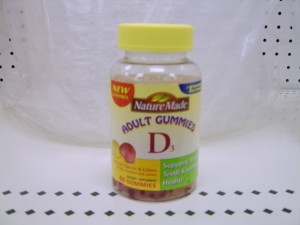Are You and Your Family Lacking in Vitamin D?
The answer is probably “YES”, unless you live in a year-round sunny climate.
Living in Minnesota/North Dakota, we are obviously not included in the above group, where it gets so so exceptionally cold for many months of the year. Some days you can’t stay outside for more than a few minutes. Even then, we may be so bundled up that the only body parts we are exposing might be our eyeballs.
You can actually draw a line horizontally across the middle of the United States and EVERY state above that line has significantly more cases of everything from depression, anxiety, MS, Alzheimers, dementia, cancer, heart issues and overall mortality!
How do I check my vitamin D levels?
Periodic blood tests are probably the most accurate way to check your level of vitamin D. According to the Institute of Medicine, blood volume ( ranging from 0-100 percent), 30 and below is associated with severe vitamin D deficiency. Levels between 30 and 50 are considered inadequate, while levels greater than 50 are generally considered adequate for bone and overall health if you are a healthy adult. (Levels greater than 150 may pose a risk for health problems).
Exposing our bare skin to the sunlight 15 minutes several times each week is said to provide enough vitamin D for us. Sunlight is the best way and the most useable form to get this vitamin to over 2000 of our genes that depend on it. (Skin exposed to sunshine indoors through a window will not produce vitamin D).
(However, you do need to limit your exposure to sunlight in order to lower the risk for skin cancer. Tanning beds also cause the skin to make vitamin D, but pose similar risks for skin cancer).
What can we do to increase our intake of vitamin D?
Very few foods naturally have vitamin D, but fortified foods can can help. Your best bets for getting vitamin D in food comes from canned pink salmon, canned tuna, mackerel and cod liver oil. Eggs, vitamin D-fortified milk, fortified orange juice, fortified cereal, fortified margarine, sardines, fish roe, beef liver, cheese, egg yolks and some mushrooms also contain the vitamin.
Between the sunlight that we are able to get and the foods that we eat, many Americans are still vitamin D deficient and almost no one has levels that are too high. Young people tend to have higher blood levels of vitamin D than older people and males have higher levels than females.
A study published recently in the Journal of Bone and Mineral Research suggests that your body may make better use of a vitamin D supplement if you take it with your largest meal. This can boost the level of vitamin D in your blood by an average of 56 percent! (Taking the supplement between a meal with water tends to just flush it out the kidneys).
Vitamin D Benefits
One important thing that vitamin D contributes to is normal bone growth during childhood and it also helps maintain bone density and strength during adulthood. Vitamin D also helps the body absorb calcium and mineral absorption from foods and supplements. Muscles need vitamin D to move, nerves need it to carry messages between the brain and every body part, and the immune system needs vitamin D to fight off invading bacteria and viruses. Vitamin D is also being studied for connections to several diseases and medical problems, including diabetes, hypertension, and autoimmune conditions such as multiple sclerosis. Some studies suggest that vitamin D may protect against colon cancer and maybe even cancers of the prostate and breast. Vitamin D is also important for cell growth and development, it helps our immune system, can help with psoriasis (the skin condition that causes skin redness and irritation) and can even reduce symptoms of tinnitus (ear infections) and improve hearing loss. Vitamin D is also strongly linked to four main autoimmune disorders (ADHD, autism, allergies, asthma) since it is so important to the immune system.
How do we know if we are getting enough vitamin D?
The amount of vitamin D you need depends upon your age. Below are the average daily recommended amount from the Food and Nutrition Board, which is a division of the National Institute of Health. The amounts are listed in International Units (IU).
| Life Stage | Recommended Amount |
|
Birth to 12 months |
400 IU |
|
Children 1–13 years |
600 IU |
|
Teens 14–18 years |
600 IU |
|
Adults 19–70 years |
600 IU |
|
Adults 71 years and older |
800 IU |
|
Pregnant and breastfeeding women |
600 IU |
What are the signs and symptoms of vitamin D deficiency?
1. Delayed growth and development
2. Irritability and restlessness
3. Rickets: softening of bones, spinal deformities, bowed legs, knock knees, enlargement of rib-sternum joints
4. Delayed tooth eruption and poorly formed tooth enamel
5. Impaired immune response with increased risk of infection
Adolescents
1. Impaired growth of bones and musculature
2. Swelling and pain at the end of long bones, especially at the knee
3. Impaired immune response with increased risk of infection
Adults
1. Loss of bone mineral from the skeleton with increased risk of osteoporosis and fractures
2. Hearing loss and ringing in the ears
3. Muscle weakness, particularly around the hip and pelvis
4.Possible increased risk of colorectal and breast cancer
5. Possible increased risk of high blood pressure Impaired immune response with increased risk of infection
Certain groups of people may not get enough vitamin D, including:
1. Breastfed infants
2. Older adults
3. People with dark skin
4. People with disorders such as Crohn’s disease or celiac disease
5. Pregnant and breast-feeding women, as well as unborn children
6. Obese people
Can I Get Too Much Vitamin D?
Vitamin D toxicity almost always occurs from overuse of supplements. Signs of toxicity include nausea, vomiting, poor appetite, constipation, weakness, and weight loss. Note: Excessive sun exposure doesn’t cause vitamin D poisoning because the body limits the amount of vitamin D that is produced.
interactions with vitamin D and other supplements and medications
- Prednisone and other corticosteroid medicines
- weight-loss drugs orlistat (brand names Xenical® and Alli®) and the cholesterol-lowering drug cholestyramine (brand names Questran®, LoCholest®, and Prevalite®)
- phenobarbital and phenytoin (brand name Dilantin®), used to prevent and control epileptic seizures
Check with your doctor and/or pharmacist on your particular situation.
Consider vitamin D supplementation.
A friend of mine, Sonia, says that she needed to take 11,000 I.U.s to get a blood volume of 47 and she, along with her doctor feels that 70-80 is ideal. “People are often afraid of taking too much vitamin D and usually take far too little. However, because it is a fat soluble vitamin (so you don’t just pee out the extra like B vitamins or vitamin C) you can get take too much and get toxic because most people can’t absorb it properly. This is why you need to get a few blood tests until you find the right amount for you,” Sonia recommends.
She also feels strongly that it’s best to get your supplement in the form of cod liver oil. She suggests a fermented cod liver oil like Green Pastures. This brand, which comes in orange and cinnamon flavors, is food-based, so it is more easily absorbed into your body. Sonia says that the next best way to get the supplement is in a liquid or pill version of vitamin D that is combined with vitamin K2, to have maximum absorbability. “If you choose to take pills, you will probably need to take several, so it’s much easier to just get the liquid.” You just dump the spoon on the back of your tongue and take something yummy afterwards.”
Sonia had just had her third child a few weeks ago and says that “this postpartum experience is unlike the birth of her other two children and she attributes it to her increased intake of a good vitamin D supplement. “I had horrible postpartum depression and especially anxiety with both of my other 2 kiddos. Vitamin D is the kicker. ”
I know that when I myself do not get an adequate amount of vitamin D, I feel much more lethargic and “blah-ish”). Getting enough of that important vitamin really has an impact on decreasing my “winter blues.”
Take care and remember to read to a child today!
Jayne
vitamin D bottle image by:flickr.com/people/lookafteryourself”
oranges/orange juice picture: www.flickr.com/people/usdagov”




Speak Your Mind